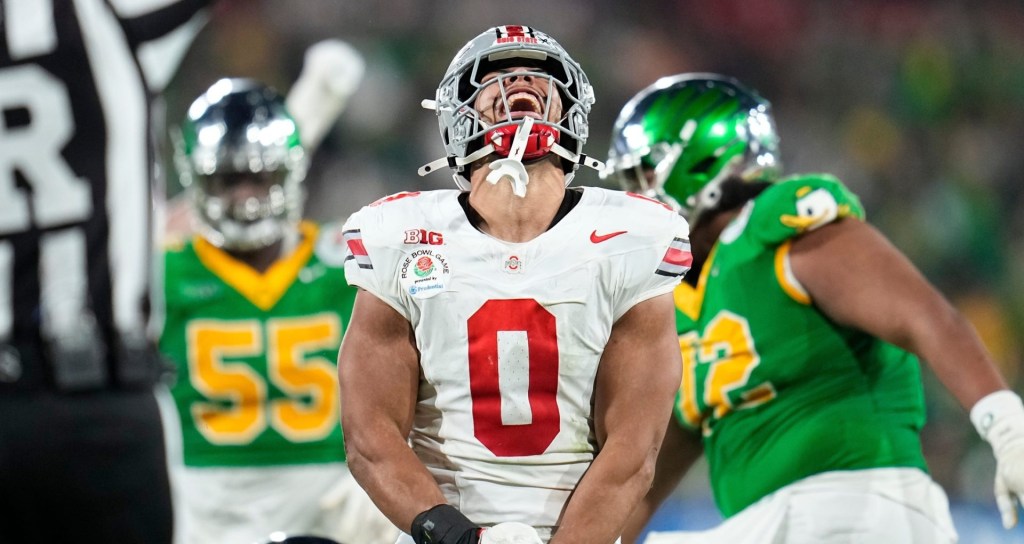Despite Fox Sports’ embrace of fake baseball fans in the stands, ESPN will not be taking the same step immediately for its MLB telecasts.
While ESPN’s Opening Night coverage of the New York Yankees’ 4-1 win over the Washington Nationals didn’t digitally insert “virtual” fans in an empty stadium, it did weave artificial crowd noise into the telecast.
But ESPN took a less is more approach from Nationals Park. The artificial crowd noise was light enough for ESPN microphones to pick up the game’s sounds and on-field chatter.
While ESPN isn’t ruling out video game-like virtual fans, it will stick with artificial crowd noise only during early season baseball coverage.
“It’s not something you see; it’s more of a feeling and an emotion,” said Phil Orlins, ESPN’s senior coordinating producer for MLB, during a conference call. “You can mentally process it’s not real or not authentic…But I think it makes the broadcast, and the game itself, feel more normal.”
Here’s how the coverage will work from a production standpoint, according to Orlins.
MLB has culled over 75 ballpark sounds from its “MLB The Show” video game. Those sounds could range from cheers and boos to PA announcers and ballpark organ music.
That audio is being given to all 30 teams, whose sound engineers will play it on stadium speakers.
ESPN will capture the artificial sounds for their coverage, just like real-life sounds from a ballpark backed with 40,000 real fans. The computer-generated crowd noise will be fed into a control room in Bristol, Conn., along with remote announcer commentary and graphics. England’s Premier League and Spain’s La Liga are also employing crowd sound from video games in their coverage.
Like other networks, ESPN has wrestled for months about how to telecast live sporting events from empty stadiums and arenas. But it’s had a lengthy trial run, televising Korean baseball games for the last few months.
From its KBO coverage, ESPN learned a little artificial crowd noise goes a long way. The network wants to use artificial crowd sound to augment coverage, not overpower it. The goal is to include a bit more real-life sound from players, managers, and coaches.
“We are not looking to fool anybody. We realize there are no fans there,” said Mark Gross, ESPN’s senior vice president of production and remote events, on a separate call. “But by having a little crowd sound below the announcers just seems to make it work and doesn’t sound quite so hollow when we are doing the games.
ESPN will nationally televise seven games over four days to kick off the 2020 MLB season. Fox, meanwhile, will kick off its MLB game coverage Saturday with a quadruple-header across the Fox broadcast and the FS1 cable network.
Fox announced it would digitally insert “virtual” fans into Wrigley Field and other ballparks during its MLB coverage this season. Working with the Silver Spoon production company, Fox will control these fake fans, making them boo and cheer, do the wave, and dressing them in team colors.
READ MORE: Q&A: ESPN’s Tim Kurkjian Talks The Challenges Baseball Faces
“No seventh-inning stretch needed for this crowd,” tweeted Fox. “Beginning Saturday, Fox Sports brings ‘virtual’ fans to its live MLB broadcasts.”
Fox told CNBC it is also discussing the “virtual” fan concept with the NFL for this season.
Going back to its introduction of the “FoxBox” on-screen score bug to NFL telecasts in 1994, Fox fancies itself a sports TV innovator.
While Fox believes its CGI spectators are cutting edge, the idea is not going over well with some baseball purists.
“I – and I cannot stress this enough – haaaaate this,” tweeted Newsday sportswriter Laura Albanese.
READ MORE: The Athletic Looking To Boost Subscribers With Cross-Marketing Deals
At present, MLB TV partner Turner Sports is not planning to employ either artificial crowd noise, or virtual fans into its game coverage said sources. However, if MLB provides it in its feeds to partner TV networks, Turner may look at ways to integrate them into its telecasts.
ESPN’s Yankees-National telecast was the most-watched MLB Opening Night game ever, averaging 4 million viewers, according to Fast Nationals data from Nielsen. It was up 232 percent from last season’s comparable Boston Red Sox-Seattle Mariners Opening Night telecast, which drew 1.2 million viewers. It ranked as the most-watched MLB regular-season game on any network in eight years.

















